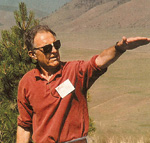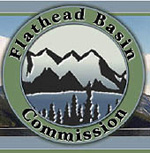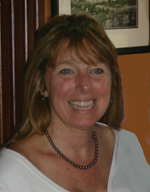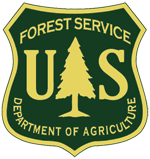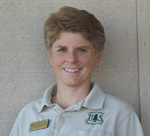The Steering Committee
The Steering Committee for the Flathead Watershed Sourcebook: A Guide to an Extraordinary Place is a group of highly dedicated resource professionals who, above and beyond their important work in the community, donate time and energy to environmental education in the watershed. The committee worked tirelessly to guide the development of the project from its inception through completion. Through this group, citizens of the Flathead Watershed have a strong voice for commonsense conservation. |
||
|
Crown of the Continent |
|
The Crown of the Continent Ecosystem covers approximately 44,000 km2 (16,000 mi2) and includes the treasured Glacier National Park and Bob Marshall Wilderness Complex in Montana and Waterton Lakes National Park in Alberta. The Crown of the Continent is mostly a vibrant, functional ecosystem. It will remain so provided the people who treasure it are willing to make themselves aware of the ecological processes that govern this ecosystem and humankind’s impact on those processes, be concerned about maintaining the health of the ecosystem, and translate their concerns into beneficial actions. Recognizing the need to accomplish these things, in 1994—at the invitation of Lex Blood—more than 20 education providers, agency and private organization representatives came together to form the collaborative Crown of the Continent Ecosystem Education Consortium (COCEEC.) COCEEC has since been active in developing ecosystem-focused curricula, workshops, and projects. In 2002 COCEEC published Crown of the Continent: Profile of a Treasured Landscape. COCEEC represents the ecosystem from the Waterton and Castle-Crown regions in southern Alberta to Missoula, Montana |
||
|
Flathead Audubon Society |
|
The Flathead Audubon Society is a local chapter of the national Audubon Society. Our mission is to: conserve birds, wildlife habitat and ecosystem diversity; promote awareness and appreciation of the natural world through education and advocacy; work with diverse groups and agencies to achieve sound decisions on natural resource issues; provide community services such as school programs, work projects, and field trips. While our efforts focus on northwest Montana, we believe in the protection of the earth and all its inhabitants. |
||
|
Flathead Basin Commission |
|
The Flathead Basin Commission (FBC) was created in 1983 by the Montana Legislature to monitor and protect water quality and the natural resources in one of the State’s most important watersheds. The FBC is a uniquely structured non-regulatory organization that works to accomplish its mandate in a consensus-building manner, stressing education, cooperation, broadly based community involvement, partnerships with agencies and nonprofit groups, and the voluntary participation of Basin residents. The twenty-three member Commission represents a cross-section of citizens and local, state, tribal, federal and provincial agency representatives who strive to identify the Basin’s water quality and natural resources problems and work collectively to implement the most effective solutions. The Agency members of the Commission are prescribed in statute; the citizen members are appointed by the governor for four-year staggered terms. The Flathead Basin Commission has become a model of successful citizen and inter-agency cooperation in a geographically vast and ecologically diverse watershed characterized by its overall pristine character, international dimension, and multi-jurisdictional nature. Caryn Miske is the Executive Director of the Flathead Basin Commission (FBC), a state agency statutorily charged with protecting the waters that flow into, and out of, the Flathead Basin. The FBC was originally established in 1983 in response to proposals from British Columbia to permit strip mining in the headwaters of the Flathead River, and the FBC has worked diligently to protect the headwaters for over 25 years. In addition to its transboundary mission, the FBC works in a variety of other areas including projects related to sustainable development within the Basin. Currently, one of the FBC’s top priorities is facilitating the development of a basinwide plan to protect the Flathead from aquatic invasive species, such as the zebra and quagga mussels. |
||
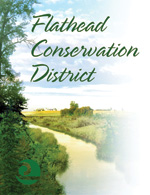 |
Flathead Conservation District |
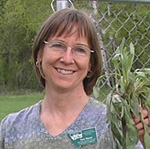 |
Conservation Districts work locally to conserve soil, water and other natural resources. The Flathead Conservation District (FCD) includes all areas within the county boundaries except within the original (1945) city limits of Kalispell and Columbia Falls. FCD has served all of Flathead County since 1945 to promote conservation and since 1976 to administer the Natural Streambed and Land Preservation Act. FCD is administered by a six member volunteer board and three staff members that work through a combination of education, outreach and on the ground projects to achieve its mission. Patti Mason is the Outreach & Watershed Coordinator for the Flathead Conservation District. She coordinates watershed group activities and all outreach efforts to promote conservation of natural resources—with a focus on soil and water resources—for children through adults. She handles grant writing and management activities for stream restoration work, weed control, revegetation, and numerous other activities of the Flathead Conservation District. Patti conducts a host of workshops, festivals, events, training, presentations, and educational efforts. Prior to joining FCD, Patti worked as an environmental consultant for air & water quality. She was Earth Science Specialist for the Department of Natural Resources Conservation where she worked on Environmental Impact Statement (EIS) analyses for soils, wetlands, streams and vegetation (including old growth forest). She worked on several revegetation projects. Patti was also an Instructor at Flathead Valley Community College in geology, earth science, environmental science, and geography. She has a Bachelor of Science in Earth Science/Resource Management (Natural Science emphasis), and a Master of Science in Geology. She has also completed coursework in secondary education for earth and life science. |
||
|
Flathead CORE |
The Flathead Community of Resource Educators (CORE) is a network of individuals and organizations working together to increase awareness & understanding about the natural, historical and cultural resources of the Flathead Region. Our goal is to link the community quickly and easily to the numerous resource educators available in the Flathead Valley. CORE promotes resource educators and programs that focus on the place we live, allowing our community members to gain a richer, fuller meaning of this incredible place we call home. |
|
Flathead Lakers |
|
The Flathead Lakers is a nonprofit organization dedicated to protecting clean water, healthy ecosystems and lasting quality of life in the Flathead Watershed. Founded in 1958, the Flathead Lakers currently has over 1,500 members. The Flathead Lakers provides leadership and a strong voice for protecting and improving water quality through education, advocacy and stewardship programs. Robin Steinkraus has been the Executive Director of the Flathead Lakers since 1997, where she works with a great volunteer board of directors and a small, committed staff. Education, advocacy and stewardship project planning and management, fundraising, commenting on resource management policy and development proposals, and building cooperation for water quality protection are all in a day’s work. She serves on the Flathead Basin Commission Water Quality Monitoring Committee, the River to Lake Initiative planning group, the CORE Watershed Education Committee, and the Flathead Basin Aquatic Invasive Species Work Group, and is a founding member of the Flathead Conservation Roundtable. After growing up in Iowa, Robin received her bachelor’s degree in English and philosophy from Bemidji State University in Minnesota. She and her husband Mark moved to Missoula where she received her master’s degree in environmental studies from the University of Montana. While in Missoula, she worked for the Montana Department of Natural Resources and Conservation’s Water Rights Bureau. Robin then worked at the University of Montana Flathead Lake Biological Station at Yellow Bay in the water quality research and monitoring program. Robin loves spending time with her daughter and son and exploring wild landscapes in the Flathead Watershed and beyond. |
||
|
Flathead National Forest |
|
The 2.4 million acre Flathead National Forest is one of 155 national forests and 20 grasslands managed by the Forest Service under the U.S. Department of Agriculture. Established in 1905, the Forest Service mission is to sustain health, diversity, and productivity of the Nation’s forests and grasslands to meet the needs of present and future generations Teresa Wenum is the Conservation Education Specialist with Flathead National Forest. During her 15 years in this role, she’s most enjoyed partnership work, teaming up with groups and individuals from different organizations and agencies to accomplish common goals. She also takes great pleasure in teaching and learning right along side educators and students. Teresa strives to help kids—including her own—stay connected to the outdoors, their local environment and community. Managing the Forest Service Summit Nature Center, playing an active role on the Family Forestry Expo planning group, classroom visits, coordinating an artist-in-residence program and Project Learning Tree facilitator are a few of her many job related projects. Teresa’s undergraduate degree is in Recreation Resources Management and she has a Master of Education degree. Before her current position, Teresa was a seasonal state park ranger in Colorado, Forest Service wilderness ranger and trail crew member, and substitute teacher. |
||
|
Whitefish Lake Institute |
|
The Whitefish Lake Institute is committed to acquiring scientific research and engaging the local citizenry to protect and improve the Whitefish area lake resources of today, while building a collective vision for tomorrow. Mike Koopal founded the Whitefish Lake Institute in 2005 and serves as the Executive Director. He’s originally a flatlander from Iowa with a biology degree from Luther College. Mike’s professional career began with the Montana Department of Fish, Wildlife and Parks as a fisheries technician working in the Clark Fork and Blackfoot River drainages. Mike then traveled to Nevada to study Lahontan Cutthroat trout for the Summit Lake Paiute Tribe, and in Alaska he worked with sockeye salmon for the Prince William Sound Aquaculture Corporation. Upon his return to Montana, Mike was a partner at Watershed Consulting for eight years where he specialized in fisheries related issues. Mike serves on the Flathead Basin Commission Monitoring Committee, the Flathead CORE Watershed Education Committee, and assists the Bigfork Stormwater Advisory Committee. Mike also recently co-coordinated the 2nd Edition of the Montana Lake Book. In 2008, Mike was presented an Individual Achievement Award by the Montana Chapter of the American Fisheries Society for his outstanding contribution to the protection and enhancement of fisheries resources in Montana. Mike’s recreational time is spent with his wife Mae and son Case, enjoying the seasonal changes of the Flathead Valley. They also enjoy increasing the sustainability of their small acreage by gardening and raising chickens and bees. |
||
 |
| Figure 8.1: Partners in Place. Source: Todd Berget |



